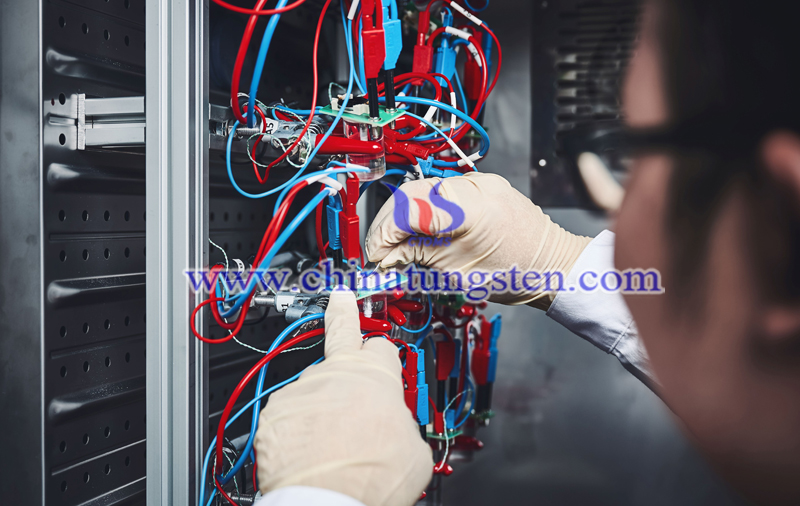Up to 30% More Capacity for Lithium-Ion Batteries - KIT Major Findings
- Details
- Category: Tungsten's News
- Published on Thursday, 12 December 2019 14:51
On lithium-ion batteries degradation mechanisms, new findings have been reported in Nature Communications by Karlsruhe Institute of Technology (KIT) recently, which might contribute to the development of batteries of far higher capacity. KIT and cooperating institutions studied structural changes during the synthesis of cathode material for future high-energy lithium-ion batteries and obtained new major findings of degradation mechanisms. It helps develop higher-capacity batteries that will increase the range of electric vehicles.

So far, the short driving distance caused by insufficient electricity has hindered the breakthrough of electric vehicles, and the lithium-ion battery with increased charging capacity will help solve this difficulty. Professor Helmut Ehrenberg, Head of the Institute for Applied Materials - Energy Storage Systems (IAM-ESS), said: "We are in the process of developing such high-energy systems. Based on fundamental understanding of electrochemical processes in batteries and by the innovative use of new materials, storage capacity of Li-ion batteries may be increased by up to 30% in our opinion." This research is conducted at the Center for Electrochemical Energy Storage Ulm & Karlsruhe (CELEST), the biggest German research platform for electrochemical energy storage. Ehrenberg is Deputy Spokesperson of CELEST.
The difference between high-energy lithium-ion technology and conventional technology lies in the specific cathode material. Instead of layered oxides with varying ratios of nickel, manganese, and cobalt that have been used so far, manganese-rich materials with lithium excess are applied, which considerably enhances the energy storage capacity per volume or mass of cathode material. However, the use of these materials has been associated with a problem so far.
During the insertion and extraction of lithium ions, that is, during the basic function of the battery, high-energy cathode materials degrade. After a certain period of time, the layered oxide transforms into a crystal structure with highly unfavorable electrochemical properties. As a result, the average charge-discharge voltage decreases from the very beginning, which has prevented the development of high-energy lithium-ion batteries.

Researchers describe the exact degradation mechanism in Nature Communications: "Based on detailed studies of the high-energy cathode material, we found that degradation does not take place directly, but indirectly via the formation of a so far hardly noticed lithium-containing rock-salt structure. Besides, oxygen plays an important role in the reactions". Apart from these results, research also shows that discoveries about the technical behavior of batteries do not necessarily have to result directly from the degradation process, and related scientists have discovered them in research on synthesizing the cathode material.
These new findings of KIT mark an important milestone on the way towards high-energy lithium-ion batteries for electric cars.
- Tungsten Manufacturer & Supplier, Chinatungsten Online: www.chinatungsten.com
- Tungsten News & Prices of China Tungsten Industry Association: www.ctia.com.cn
- Molybdenum News & Price: news.molybdenum.com.cn
- Tel.: 86 592 5129696; Fax: 86 592 5129797; Email: sales@chinatungsten.com



 sales@chinatungsten.com
sales@chinatungsten.com